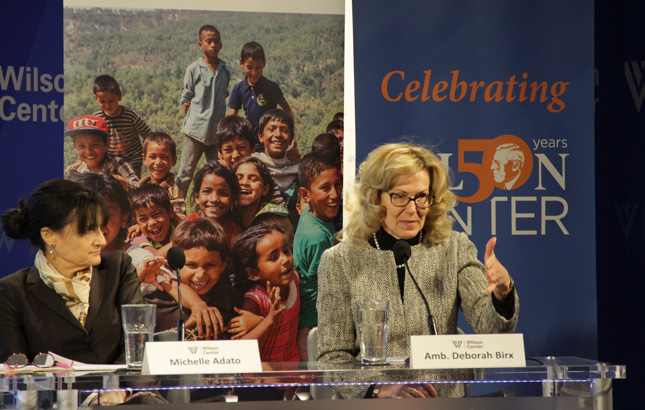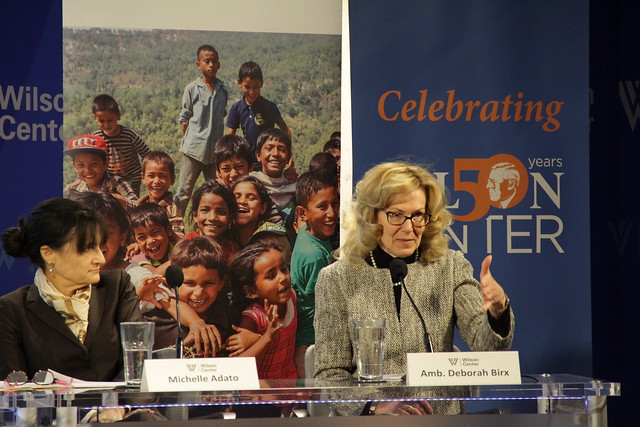-
U.S. Global AIDS Coordinator: DREAMS Program Reduced HIV/AIDS Among Adolescent Girls in Sub-Saharan Africa
February 6, 2018 By Yuval Cohen
“There is no healthcare delivery system for non-pregnant 15- to 24-year olds,” said the U.S. Global AIDS Coordinator, Ambassador Deborah Birx, at a recent Wilson Center event on efforts to reduce the prevalence of HIV/AIDS among adolescent girls in sub-Saharan Africa. In 2014, the U.S. President’s Emergency Plan for AIDS Relief (PEPFAR) established the DREAMS program, which aims to create “a health care system where young people interact in a proactive and positive way,” said Birx.
Given the high rates of sexual violence in the 10 DREAMS focus countries, programs must reach 9- to 14-year olds, said Ambassor Birx. “We can’t change their future if we don’t ensure that [sexual violence] doesn’t exist,” she said. “We have to work together with the government and the communities to really create a new pathway for young women.”
But how best to reach girls that young? Traditional leaders and youth ambassadors can help: “The girls feel motivated, they accept the program, and as a result, they want to participate in the program because it is respected by the traditional leaders,” said Glory Mkandawire from One Community Malawi. And Nadyah, a member of the Plan Youth Advisory Board, said “word of mouth was a huge way for them to learn about the program and the successes,” naming youth ambassadors as one of the most effective forms of outreach.
Data can help find the right places to focus: Michelle Adato of the Millennium Challenge Corporation (MCC) said that the Data Collaboratives for Local Impact program uses data “to predict where girls are likely to drop out of school and to be ready with solutions in those areas.”
DREAMS reduced new adolescent HIV/AIDS cases by an impressive 25 to 40 percent in focus countries. But the intangible results from the program were perhaps just as significant: “For the first time, someone is not only listening, but hearing,” said Ambassador Birx. “I think they feel like finally they are being heard.”
Sources: John Hopkins Center for Communication Programs, PLAN International, President’s Emergency Plan for AIDS Relief (PEPFAR), U.S. Millennium Challenge Corporation
Topics: adolescent health, Dot-Mom, featured, From the Wilson Center, gender, global health, Malawi, media, video, youth
 A Publication of the Stimson Center.
A Publication of the Stimson Center.




